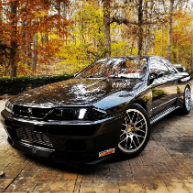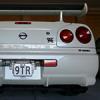RB26 Tomei Type R Cams - Results?
Announcements
-
Similar Content
-
Latest Posts
-
By TurboTapin · Posted
Well it wasn't as easy as I thought.... and it also wasn't in my original manual which I did end up finding. They discuss the process in the Nismo catalogue though and it requires slight machining. Page 145. NISMO PARTS CATALOGUE 2020 -
By TurboTapin · Posted
I'm an idiot, my intercooler is rated for 1000hp. I had clicked on the wrong product. Knowing the delta P would be nice, but I'm doubtful I'll do it. Now as for an EMAP, that would be great and I'll get around to it eventually but from my findings in my last post, I'm considering a turbo swap now. -
By TurboTapin · Posted
You sir, big win tonight. Precision never supplied compressor maps in the past and Idk when they started, but it seems they only offer for a few of the older gen2's which is exactly what I have. I punched in some numbers and seem to have gone with the wrong turbo. 600-700whp isn't in the most efficient area and is close to the choke line. 800whp is well off the map. Punching the numbers into a 68mm gen2 turbo map is bang on in the center. Here I was thinking going smaller would shift the power band down, but in reality it would just make it so much worst due to my rev limit. I would have never thought. -
By Dose Pipe Sutututu · Posted
Increasing overlap will bring the torque down earlier (and make your idle sound sick lol). Worth a shot (if you dyno time) to experience a bit (providing you are confident your valves won't kiss your pistons). Is to just take off 5 degrees across the boosted area of the map, and then retard the exhaust cam let's say, 3 degrees at a time and then overlay all the runs with VCT on all the way and VCT off as soon as you make positive pressure. Ideally you would have a total of 6x overlays to looks at 0 exhaust & VCT off once manifold pressure is +ve 0 exhaust & VCT on all the way -5 exhaust & VCT off once manifold pressure is +ve -5 exhaust & VCT on all the way -10 exhaust & VCT off once manifold pressure is +ve -10 exhaust & VCT on all the way Just leave your O2 wideband closed loop on for all of the boost area & RPM, and hopefully there isn't too much fuel correction needed and the Haltech is fast enough to compensate (I do this, then apply the correction to the main table). Getting that overlay data should give you a good indication of what to aim for. -
So, my main limitation here is that the car does not have an oil pressure sensor by default, just a switch. As part of my tune I bought an oil pressure sensor upgrade so I now have access to oil pressure levels and logging rather than just the boolean behaviour of the switch but this means I need to use the tuning app to display this value. So, this rules out using any other app on the iPad. The app will also flash when pressure drops which is a nice feature. I have replaced the centre screen with an Android one, which is awesome for Android Auto, but I think it might be too far away and out of my line of sight. I might add some gauges to it this weekend and just see. I guess if its just temp and oil pressure I can make them massive! 🤣
-








Recommended Posts
Create an account or sign in to comment
You need to be a member in order to leave a comment
Create an account
Sign up for a new account in our community. It's easy!
Register a new accountSign in
Already have an account? Sign in here.
Sign In Now